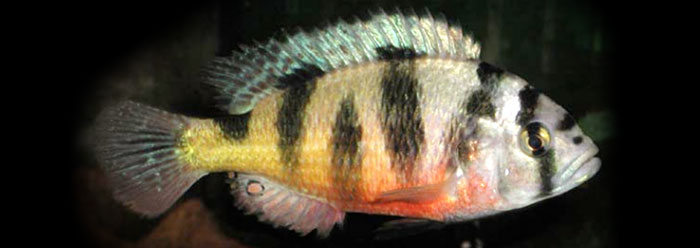Biologists are having a difficult time figuring out how to fit a tropical fish’s rapid coloration changes into the story of evolution. A new study examined the role these changes play in the fish’s mating habits, and concluded that they could contribute to the development of different species. However, the researchers admitted that “the role of selection in the formation of new species has yet to be fully explained in evolutionary biology.”1 The observations of these fish fit quite well, however, within the creation biology model.
Published in a recent edition of Nature, the study suggests that African cichlid fish in Lake Victoria undergo natural selection, contributing to the formation of a new species (a process called “speciation”). They describe how deeper water favors the selection of female fish that are better able to see the color red and therefore prefer red males. In shallow water, the females see blue, so males that display blue colors populate these zones more often.2 “These mating preferences can be strong enough to drive the formation of new species,” the researchers suggest.1
However, they also found that the bluish and reddish cichlids interbreed. Due to agricultural runoff, the waters of Lake Victoria are often too murky for the cichlids to notice subtle differences in coloration. In these cases, the fish were “not specifically adapted” to blue or red anymore.2 In other words, the cichlids can rapidly favor certain colors, but then rapidly change back to having no particular preference if the environment is no longer color selective.
Does this represent onward and upward evolutionary progress? Variation within a kind is not evidence for the origin of that kind. These fish do not demonstrate macroevolutionary processes (the progression from simpler to more complex forms), but rather reflect microevolution (variation within an interbreeding kind). This fits well with the Genesis account, in which all living creatures were created “after their kind.”3 Not surprisingly, the researchers ignore the Creator’s Word, and attribute this “trove of genetic variation for sensory systems and male signals” to “distant ancestors.”2
The capacity for shifting coloration is a reflection of a purposeful, aesthetically-minded Maker, so it is no wonder that evolution has a difficult time accommodating the rapidity, beauty, variety, and very origin of cichlid color oscillations, let alone the origin of the cichlids themselves. Thus, like Darwin’s finches on the Galapagos Islands—where fluctuation in beak shape over generations oscillates from skinny to fat and the finches remain finches4—these cichlids remain cichlids. Moreover, they have an ingeniously integrated capacity to adapt into and out of ecological niches, which is consistent with the wisdom of the Creator God of the Bible.
References
- New species thanks to different ways of seeing. Eawag: Swiss Federal Institute of Aquatic Science and Technology press release, October 1, 2008.
- Kirkpatrick, M. and T. Price. 2008. Sensory ecology: In sight of speciation. Nature. 455 (7213): 601-602.
- Genesis 1:21.
- Morris, J. 1994. Does “The Beak of the Finch” Prove Darwin Was Right? Acts & Facts. 23 (12).
* Mr. Thomas is Science Writer.
Article posted on October 16, 2008.






















